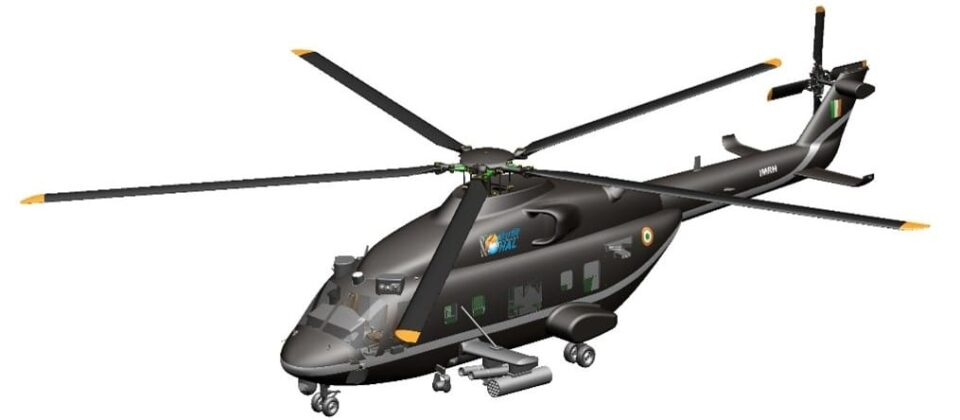Airlines
HAL and Safran move forward in the partnership for the IMRH helicopter engine

Safran Helicopter Engines and Hindustan Aeronautics Limited (HAL) have signed a workshare agreement for the joint development of the engine intended for the future 13-ton IMRH (Indian Multi-Role Helicopter) and its naval version DBMRH (Deck Based Multi-Role Helicopter).
10 facts about the Light Combat Helicopter (LCH) made by Indian HAL. (Opens in a new browser tab)
This agreement follows the MoU (Memorandum of Understanding) signed on 8th July 2022 and stipulates the sharing of activities within the joint venture where both parties have agreed on an equivalent repartition. In particular, HAL will take part in the design, development, and production of some of the core engine components, which is a breakthrough achievement in terms of expertise and know-how in the country.
The development of the IMRH helicopter continues, and a 1/3 scale model was displayed by HAL at Aero India 2023. Discussions are also continuing with the Indian Armed Forces on the operational requirements for this new helicopter. The availability of an indigenous engine will enhance the self-reliance content on the platform and demonstrates the commitment of both Safran Helicopter Engines and HAL to the Indian Government’s vision of “Atmanirbhar Bharat”, or achieving self-reliance – particularly in defense technologies.
Safran and HAL will continue to work on the development of this joint venture in the coming months, which is intended not only to develop an engine for the IMRH but also for other helicopters.
Both partners also agreed on the condition for the transfer right to HAL for manufacturing of seven critical forging and casting raw parts, for further enhancement of indigenous content in Shakti engine of Dhruv and Light Combat Helicopter (LCH) programs.

Airlines
Sanctions & Engine Issues Ground Half of Russia’s A320neo fleet

Russia’s aviation sector, already strained by Western sanctions, faces another setback as nearly half of its Airbus A320neo family aircraft are grounded due to unresolved engine issues.
This development highlights the growing challenges for russia commercial aircraft in maintaining their fleets under the weight of global restrictions and limited access to spare parts.
Out of the 66 Airbus A320neo and A321neo jets in Russia, 34 are now out of service, according to the Kommersant business newspaper. These planes are powered by engines manufactured by Pratt & Whitney, a subsidiary of RTX Corporation.
DAMAC Air: Dubai’s New Luxury Airline Offers Free Flights for Registration
The engines are affected by a previously identified defect in the metal used for certain parts, prompting accelerated inspections and maintenance.
Sanctions have compounded the issue, blocking the supply of essential components from major manufacturers like Boeing and Airbus. Without proper maintenance, experts warn that these aircraft may face decommissioning as early as 2026.
COMAC Unveils Plans for the C929 to Rival Airbus and Boeing
Airlines like S7, which operates a significant portion of these grounded jets, plan to conserve the engines for future use during peak travel seasons. However, reports suggest that over 20 of S7’s Airbus planes have engines that have already reached the end of their operational lifespan. Recently, russia seeks assistance from kazakhstan’s airlines to bolster its domestic flights.
While some A320neo and A321neo planes in Russia are equipped with French-made LEAP engines, which are seen as less problematic, the challenges remain daunting.
The situation underscores the long-term impact of sanctions on Russia’s aviation sector and the increasing difficulties in keeping its modern fleets operational.
-

 Aviation2 months ago
Aviation2 months agoMicrosoft Flight Simulator Raises $3 Million to Bring Back the An-225 Mriya
-

 Airlines2 months ago
Airlines2 months agoQantas Engineers Stage Walkout Over Cost of Living Concerns
-

 Airlines2 months ago
Airlines2 months agoQatar Citizens Can Travel to the United States Without a Visa
-

 Aviation2 months ago
Aviation2 months agoQatar Airways bans these new Electronic Devices on plane
-

 Airlines2 months ago
Airlines2 months agoJapan Airlines Rolls Out Free Domestic Flights to International Passengers
-

 Defence2 months ago
Defence2 months agoWhich Country Has the Largest Fleet of Fighter Aircraft?
-

 Airport2 months ago
Airport2 months agoWestern Sydney Airport Welcomes Its First Plane After 6 Years of construction
-

 Travel2 months ago
Travel2 months agoQatar Airways Launches Four Additional Flights from Amsterdam








